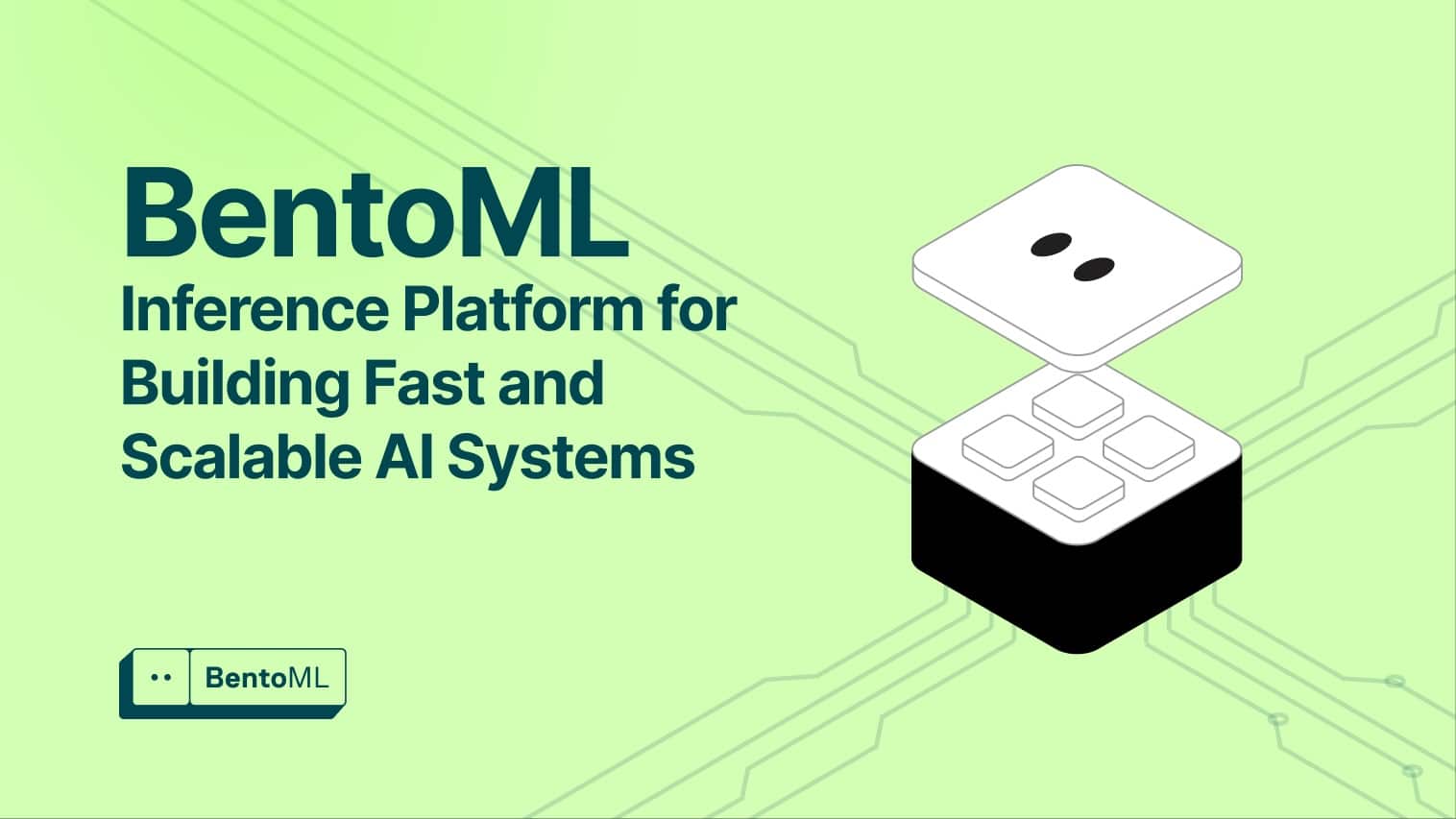Introduction to BentoML
In the era of artificial intelligence, one of the biggest challenges is not just training models, but efficiently deploying them in production. This is where BentoML emerges as a key solution. It is an open-source framework designed to simplify the process of MLOps (Machine Learning Operations), facilitating the deployment, scalability, and management of AI models across different environments.
BentoML enables developers to build optimized inference systems with support for multiple models, as well as integrate advanced tools to enhance performance and observability. Its ease of use and flexibility have made it a popular choice among data engineers and AI developers.
Key Features of BentoML
BentoML stands out by offering a complete and modular solution for deploying AI models. Some of its most relevant features include:
- Support for any AI/ML model: Models from popular frameworks such as TensorFlow, PyTorch, Scikit-learn, and Hugging Face Transformers can be deployed.
- Performance optimization: Utilizes advanced techniques such as dynamic batching, model parallelism, multi-model orchestration, and distributed execution.
- Ease of API creation: Converts inference scripts into REST API servers with just a few lines of code.
- Automation with Docker: Automatically generates Docker images with all necessary dependencies to ensure reproducible deployments.
- Support for CPU and GPU: Maximizes resource usage thanks to support for multiple GPUs and hardware acceleration.
- Monitoring and observability: Provides detailed metrics to analyze performance and optimize models in production.
BentoML is not just limited to serving models; it is part of a broader ecosystem that includes:
- BentoCloud: A cloud platform for managing deployments at scale.
- OpenLLM: A tool for running open-source language models.
- BentoVLLM: An optimized implementation for inference of large-scale language models.
- BentoDiffusion: Infrastructure for serving image and video generation models.
Practical Example: Deploying a Text-to-Speech (TTS) Service with BentoML
Next, we will build a text-to-speech (Text-to-Speech – TTS) conversion service using Hugging Face’s Bark model and deploy it on BentoCloud.
1. Environment Setup
We will install BentoML along with the necessary dependencies:
pip install bentoml torch transformers scipy
2. Creating the Service in app.py
import os
import typing as t
from pathlib import Path
import bentoml
@bentoml.service(resources={"gpu": 1, "gpu_type": "nvidia-tesla-t4"}, traffic={"timeout": 300})
class BentoBark:
def __init__(self) -> None:
import torch
from transformers import AutoProcessor, BarkModel
self.device = "cuda" if torch.cuda.is_available() else "cpu"
self.processor = AutoProcessor.from_pretrained("suno/bark")
self.model = BarkModel.from_pretrained("suno/bark").to(self.device)
@bentoml.api
def generate(self, context: bentoml.Context, text: str, voice_preset: t.Optional[str] = None) -> Path:
import scipy
output_path = os.path.join(context.temp_dir, "output.wav")
inputs = self.processor(text, voice_preset=voice_preset).to(self.device)
audio_array = self.model.generate(**inputs).cpu().numpy().squeeze()
sample_rate = self.model.generation_config.sample_rate
scipy.io.wavfile.write(output_path, rate=sample_rate, data=audio_array)
return Path(output_path)
3. Configuring bentofile.yaml
service: "app:BentoBark"
labels:
owner: Abid
project: Bark-TTS
include:
- "*.py"
python:
requirements_txt: requirements.txt
docker:
python_version: "3.11"
system_packages:
- ffmpeg
- git
4. Cloud Deployment with BentoCloud
To deploy the application on BentoCloud, we log in:
bentoml cloud login
Then we run:
bentoml deploy
This will generate a Docker image and set up the service in the cloud.
Testing and Monitoring the Service
To verify that the service is functioning, we use curl to make a request to the endpoint:
curl -s -X POST \
'https://bento-bark-bpaq-39800880.mt-guc1.bentoml.ai/generate' \
-H 'Content-Type: application/json' \
-d '{"text": "Hello, this is a test message.", "voice_preset": ""}' \
-o output.mp3
Additionally, BentoCloud provides advanced monitoring tools to analyze the performance of the service in real-time.
Comparison with Other Solutions
| Feature | BentoML | Kubernetes & Docker | TensorFlow Serving |
|---|---|---|---|
| Ease of Use | High | Low | Medium |
| Setup | Automatic | Manual | Manual |
| Scalability | Integrated | Requires configuration | Limited |
| AI Integration | Natively Supported | Not specific | Only TensorFlow models |
BentoML excels in ease of use and rapid integration with cloud infrastructures, making it an ideal choice for data scientists without DevOps experience.
Conclusion
BentoML is a versatile and efficient platform that enables AI developers to deploy and scale models quickly and easily. Its integration with multiple AI tools, focus on performance optimization, and ease of use make it an ideal solution for both beginners and experts in MLOps.
For more information, check the official documentation on GitHub or the examples repository on GitHub.
Source: AI News

